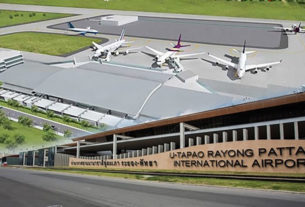SEAWATER, they said, is expected to reach Bangkok
“Our findings have predicted what is coming. The question now is how the government will prepare for this,” said Dr Chalermchon Satirapod, a researcher in the GEO2TECDI (GEodetic Earth Observation Technologies for
Chalermchon, a lecturer in
Geology lecturer Thanawat Jarupongsakul recommended flood-tax collection and insurance to set up a fund for flood compensation; land expropriation — with just compensation payment — to retain flood water in the natural waterways; and the overhaul of the flood warning system and water resource management. He said climate change and the La Nina phenomenon had brought heavy downpours and floods to
Analysing data from 2002 to 2010, he found that El Nino caused drought, which once happened every three years, now to occur every 1.6 years, while the La Nina phenomenon, which occurred every 4.6 years, now struck every 2.6 years. This information was in line with the Central region’s severe flood of 2006, he said.
More structures are being built to prevent floods, and their capacity in five years will reduce the flood re-emergence rate by 16 per cent, he said. But in 10 years or more, the flood re-emergence rate will rise to 50 per cent.
Thanawat pointed out that the building of flood-prevention systems remained scattered and wasn’t up to standard. He urged the government to find flood-prevention measures for the
Chalermchon mentioned the findings by the Thailand-EU joint research project, GEO2TECDI, which used three space geodetic techniques: the Global Navigation Satellite System (GNSS), Interferometric Synthetic Aperture Radar (InSAR) and Satellite Altimetry (SALT), for the detection, monitoring and modelling of land surface motion and deformation due to tectonic processes, land subsidence and sea-level change.
They revealed negative effects for
When these factors combined with the rate of
Based on these findings, the land and sea surface moved closer to each other at the average of 30mm per year. If nothing is done to counter this,
University rector Pirom Kamolrata-nakul said the government seemed to deal with the flooding mostly after it had occurred, rather than deal with the source of the problems and prepare for the coming year.
Source: http://news.asiaone.com/News/Latest%2BNews/Asia/Story/A1Story20101117-247672.html

